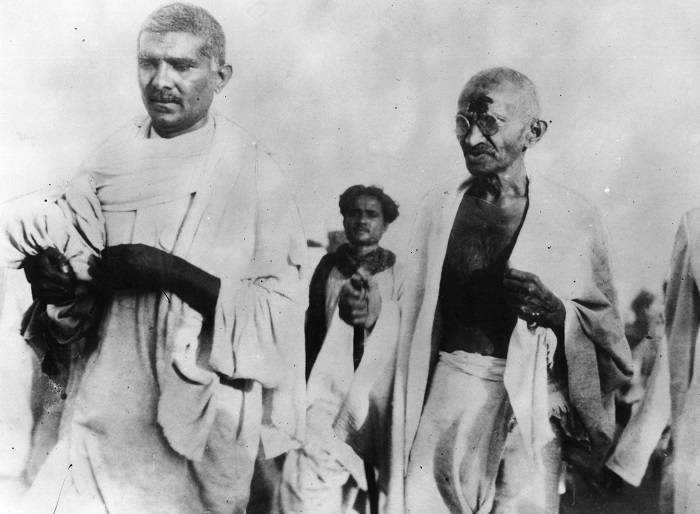Over the course of history, India has faced several invasions. While most of the invaders made their intentions clear right from the word go, the British managed to bring India under their control through a business venture. It all started with the British East India Company, which started off as a mere joint-stock company, but slowly went about spreading its wings and influence, before the British government finally took control of the entire country.
The British company had landed in India in the early seventeenth century as traders, but began interfering in Indian affairs around 1750s. After the battle of Plassey (1757), it began to transform from a trading company to a ruling force. As the British began to spread their tentacles over a large part of India, the exploitation of local resources and people began in full force. The British were concerned just about consolidating their rule and power.
The British rule had a damaging effect on the social, economic, cultural and political life of Indians, which gradually forced common masses and rulers to rise in revolt against the British rule. Several agrarian, tribal, and political rebellions broke out against the foreign rule, but it was the rebellion of 1857, which proved as a launch pad for all the subsequent struggles against the British rule.
The continuously increasing awareness, contact with the outside world, and the urge to free the motherland, gave rise to an organized movement by the end of the nineteenth century, which uprooted the 200-year-old British rule in 1947.
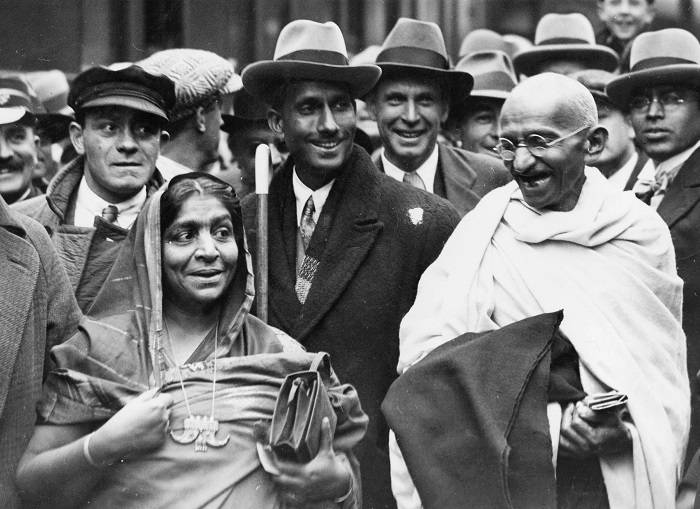
The History of British Colonialism in India
After the fall of the Mughal Empire, the British gained the support of many local rulers by offering them help against their adversaries. Since the British were equipped with huge cannons and newer war technology their support proved helpful to many Indian rulers. In exchange for their support, the East India Company managed to set up trading centers in places like Madras, Calcutta and Bombay. The British gradually started to extend their fortification. When they were asked to stop their extension by Siraj-ud-daulah, the Nawab of Bengal, they defeated him in the Battle of Plassey (1757). This win against Siraj-ud-daulah played a crucial role in colonizing the whole of India.
Early Rebellions Against the British Rule
For their short-term benefit, many Indian rulers supported the British colonization in India, but many of them opposed the idea of foreign rule. This created a conflict between Indian rulers, which was further used by the British to their advantage. Among the early rebellion, South Indian rulers, such as Puli Thevar, Hyder Ali, Tipu Sultan, Pazhassi Raja, Rani Velu Nachiyar, Veerapandiya Kattabomman, Dheeran Chinnamalai, Maruthu Pandiyar, etc. revolted against the British and fought several wars and battles.
Many rulers like Hyder Ali and Dheeran Chinnamalai sought the help of Maratha rulers in their fight against the British.
Agitated by the ill-impact of the British rule on the social, cultural, tribal, and economic fabric of society, many individuals like Sidhu Murmu, Kanhu Murmu and Tilka Manjhi stood up against the British colonization.
While the British managed to defeat bigger ruler like Tipu Sultan via local alliances (supporting one ruler against the other), they did not have must difficulty in suppressing local agrarian and tribal rebellions. The British not only used better weapons, but they also resorted to devious tactics like the ‘divide and rule policy’ in to consolidate their rule and might.
Even though the British tried their best to suppress rebellions across India, these revolts would not stop as the British not only subjected people to a foreign rule but also exploited people economically.
The Revolt of 1857
Often referred to as the ‘First War of Indian Independence,’ the revolt of 1857 was the result of a series of incidents, but the immediate reason for the revolt was the issue of ‘greased cartridges.’ The East India Company mistreated the Indian soldiers and discriminated between the Indian and the European soldiers. While the soldiers knew that the British were using factors like religion and caste against them, the news of the newly introduced Enfield P-53 rifles using cartridges made out of fat extracted from beef and pork sparked a widespread rebellion against the British. Since the soldiers had to bite the cartridge in order to load the rifle, it did not go down well with the Hindu and Muslim soldiers as it hurt their religious belief. Since consuming beef and pork is against the religious beliefs of Hindus and Muslims respectively, the allegation convinced Indian soldiers that the British were trying to convert them into Christians.
This, along with many other factors, played a crucial role in the revolt of the soldiers. Many Indian rulers from different states followed suit and locked horns with the British. At the end of it all, at least 800,000 people, including many civilians, were killed. As a result of the rebellion, the British government took control of the administration of India from the East India Company.
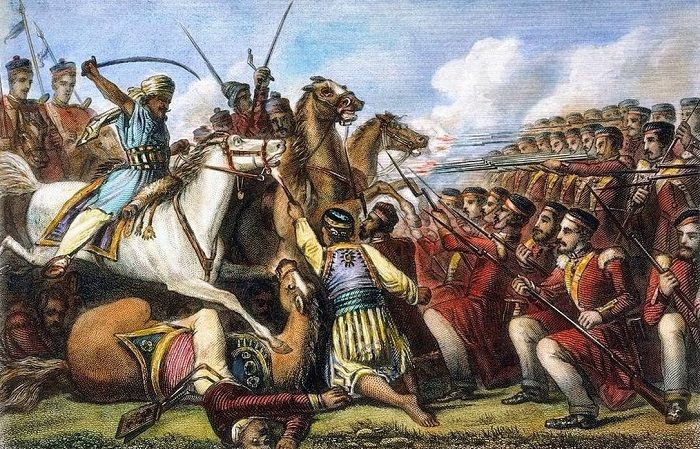
Organized Movements
The revolt of 1857 was the first large-scale rebellion against the British rule, and inspired the future generation to fight for the independence of the motherland. Slowly and gradually many organizations were formed that started to demand for some sort of self-governance and rights for Indians.
In 1867, Dadabhai Naoroji founded the East India Association, while Surendranath Banerjee came up with the Indian National Association in 1876.
With more and more people coming up with the demand for more rights, several prominent people came forward and decided to form a platform that will demand for self rights and self governance. It led to the formation of the Indian National Congress in 1885.
Since the British failed to grant even the moderate demands set by the Congress, many Indians started questioning the moderate leaders of the Congress, and advocated more radical approach in dealing with the British, which gave rise to several revolutionary organizations that advocated use of force and violence.
Works done by socio-religious groups like Brahmo Samaj and Arya Samaj played a crucial role in creating awareness among Indians. The works of reformers like Swami Vivekananda, Rabindranath Tagore, V. O. Chidambaram Pillai and Subramanya Bharathy evoked a sense of nationalism among Indians.
The Rise of Nationalism
Radical leaders like Bal Gangadhar Tilak straightway pushed for self-rule for Indians. Tilak was also saddened by the fact that the education system of the British government did not portray India’s history and culture in a positive light. He advocated complete freedom (Swaraj) and managed to inspire many Indians with his famous slogan, “Swaraj is my birthright and I shall have it.” He was joined by other like-minded leaders like Bipin Chandra Pal and Lala Lajpat Rai. The trio together came to be known as ‘Lal-Bal-Pal,’ but they were expelled from the Congress for advocating violence and disorder. However, they had done enough to instill nationalism into the minds of thousands of Indians.
The Partition of Bengal
Since pre-independent Bengal was as big as France in terms of its geography, the then Viceroy and Governor-General, Lord Curzon, ordered the partition of Bengal in 1905. He argued that the partition would lead to a better administration and ease the rising conflict between the Hindus and the Muslims.
The Indian nationalists, however, believed that the move was an attempt to slow down the momentum gathered by the recent nationalist movements. They also believed that Lord Curzon was employing the divide and rule policy to create a rift between Hindus and Muslims. This led to a large-scale protest against the British rule, including boycotting British products and publications of several rebellious newspapers and articles. The government was eventually forced to reunite Bengal in 1911. But a new partition, based on the languages spoken, was created soon after. The partition of Bengal left an indelible mark on the people and political scenario of Bengal.
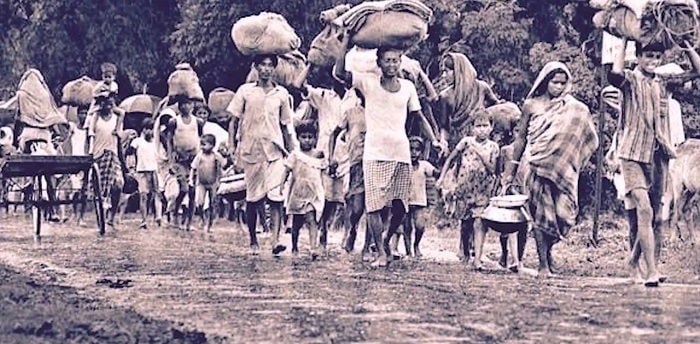
The Rise of the Muslim League
In 1886, Syed Ahmed Khan, an Islamic reformist and philosopher, founded the All India Muhammadan Educational Conference. The conference was set-up in an attempt to provide quality education to Indian Muslims. The conference organized annual meetings to discuss various methods to improve the quality of education, among other things. In 1906, during the 20th session of the conference, the members decided to set up a political party called the ‘All India Muslim League.’ After the creation of the All India Muslim League, the party strived towards achieving equal civil rights for the Muslim population in India. Slowly and gradually, the Muslim league started to propagate the theory that the Indian National Congress was a pro-Hindu outfit, and that the political party was incapable of ensuring equal rights for the Muslim community in India. This belief found many takers, and slowly and gradually more and more Muslim leaders started contemplating the idea of creating another political entity where Muslims would form the majority.
National Movement & the First World War
The national movement started picking-up at the end of the nineteenth century and by the turn of the new century it had gathered a critical mass, which would propel it further in the coming years. More and more people were joining hands with nationalist leaders and the Congress to raise the demand of self-rule. Led by leaders like Lala Lajpat Rai, Bal Gangadhar Tilak, Bipin Chandra Pal and V. O. Chidambaram Pillai, more and more commoners began to protest against the British government.
Though the Indian National Congress was still advocating the importance of the British rule, people had begun to participate in mass movements, which inspired others as well. Meanwhile, just before the beginning of the First World War, the British government had promised special benefits to India in return for their support during the First World War. As many as 1.3 million Indian soldiers were sent to places like the Middle East, Europe and Africa to fight for the British in the First World War. Also, many individual rulers of different princely states supported the British by sending large supplies of money, food and ammunition.
The Arrival of Mahatma Gandhi
Gandhi had mastered the methods of civil disobedience through non-violent means in South Africa, where he worked as a barrister. In 1914, many political prisoners were freed by General Jan Smuts, thanks to Gandhi's non-violent protests. Impressed by his methods, a prominent leader of the Indian National Congress Gopal Krishna Gokhale requested Gandhi to return to India and join the national movement. Upon his arrival, Gandhi joined the Indian National Congress and accepted Gopal Krishna Gokhale as his mentor. He then went on to establish Satyagraha ashram and led a Satyagraha campaign in 1917. For the next three years, Gandhiji led many non-violent protests that included Satyagraha and fasting. The Kheda Satyagraha and the Champaran satyagraha were some of the early movements where he applied the concept of Satygraha to fight for the rights of farmers and other peasants.
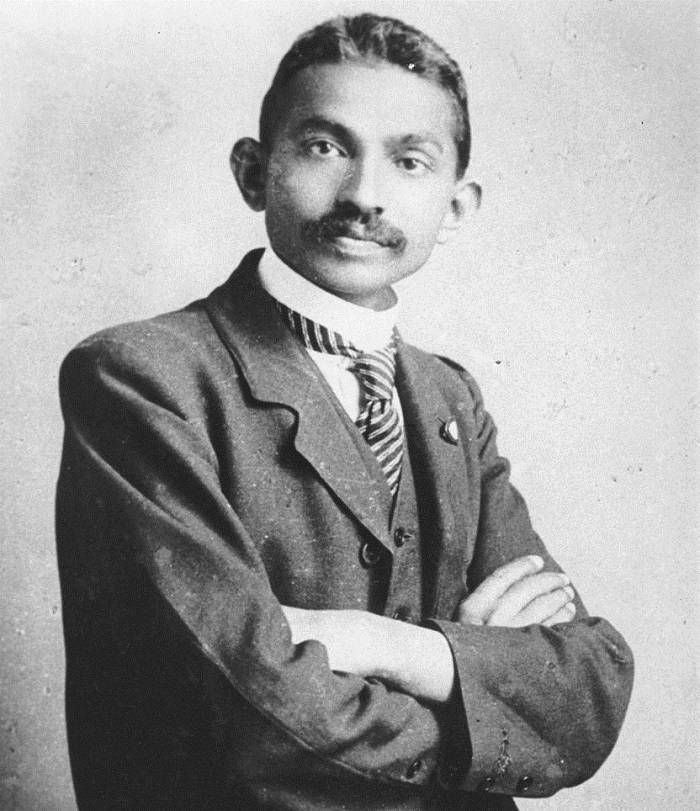
The Non-Cooperation Movement
In 1919, Brigadier-General Reginald Dyer ordered to shoot at a peaceful gathering of men, women and children in Jallianwala Bagh, who had gathered to celebrate Baisakhi and to condemn the arrest of Dr. Saifuddin Kitchlew and Satya Pal. This inhuman act of the British sent shockwaves across India, and received strong criticism and protests all over India. Mahatma Gandhi too denounced this cowardly behavior and strongly condemned it.
The national movement was slowly building-up and the Jallianwalah Bagh incident played an important role in the start of the ‘Non-cooperation Movement.’ It was the first big Satyagraha movement under Gandhi’s leadership. He requested the support of other political and religious leaders and gave a call to Indians to stop using British products.
Gandhiji advocated the use of Khadi over British textiles. He also asked government servants to quit their jobs, and return the British titles and honors. Many Indians refused to pay taxes and many teachers and lawyers gave up their respective profession. The non-co-operation movement became a huge success throughout India until it was called off by Gandhiji in the wake of the Chauri Chaura incident, in which three civilians and 22 policemen were killed.
The Non-cooperation movement had seen an unprecedented and large-scale participation from the people of all regions and status. The entire country was transformed into a different zone and the protests were largely successful, but the unfortunate incident at Chauri Chaura forced Gandhi to call the movement off. He said that people were still not ready for mass-movements of this nature.
The decision to call-off the non-cooperation movement left many disappointed and was criticized by several leaders.
Revolutionary Movement & its Role in Freedom Movement
While the Indian National Congress, led by leaders like Gopal Krishna Gokhale and Mahatma Gandhi, advocated civil disobedience and non-violent protests, many firebrand leaders believed in overthrowing the British with the use of force. The revolutionary movement had begun as early as the late 1750s, but it was during the Partition of Bengal that it began to take shape. Under the leadership of Barin Ghosh, many revolutionaries began to collect arms and explosives. They even started manufacturing bombs and some were even sent to foreign countries to acquire knowledge about bomb-making and other military training.
By 1924, Hindustan Republican Association (HRA) was formed and firebrand revolutionaries like Chandrashekhar Azad, Bhagat Singh, Ashfaqullah Khan, Ramprasad Bismil, Shivaram Rajguru, Surya Sen, etc. began to involve themselves in various revolutionary activities. Some of the famous revolutionary activities include Alipore bomb conspiracy, Chittagong armoury raid, Kakori train robbery, Delhi-Lahore conspiracy case, etc.
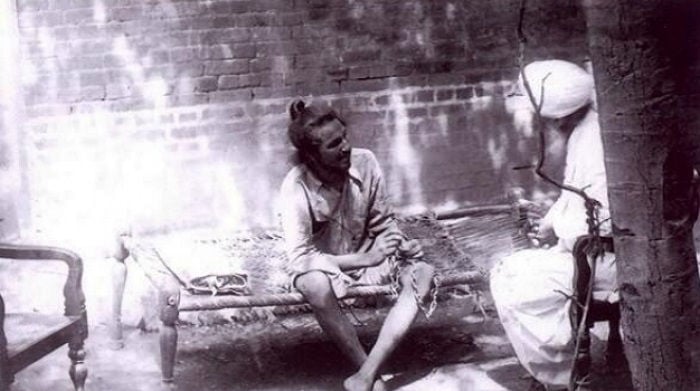
Azand Hind Fauz
Subhas Chandra Bose quit the Indian National Congress and travelled to many countries to seek help for India’s independence. Bose wanted to raise an Indian army to fight against the British. Based on Hitler’s advice, he went to Japan and formed the Indian National Army (Azad Hind Government). During the Second World War, the Indian National Army managed to capture Andaman and Nicobar islands with the help of the Japanese army. However, the setback to Japan in the Second World War impacted the prospects of the INA as well and it’s march was blocked on the Border and many soldiers and officers were arrested.
Quit India Movement
As the World War II progressed, Mahatma Gandhi intensified his protests for the complete independence of India. He drafted a resolution calling for the British to Quit India. The 'Quit India Movement' or the 'Bharat Chhodo Andolan' was the most aggressive movement launched by the Indian National Congress. Gandhi was arrested on 9th August 1942, and was held for two years at the Aga Khan Palace in Pune. The Quit India Movement came to an end by the end of 1943, when the British gave hints that complete power would be transferred to the people of India. Gandhi called off the movement which resulted in the release of 100,000 political prisoners.
Partition & Independence of India
Though prominent leaders like Mahatma Gandhi and Jawaharlal Nehru were not willing to accept the formula of partition based on religion, but communal clashes between religious groups hastened the creation of Pakistan. The independence cum partition proposal offered by the British Cabinet Mission in 1946 was accepted by the Congress. Sardar Patel convinced Gandhi that it was the only way to avoid civil war and the Mahatma reluctantly gave his consent. The British Parliament passed the famous Indian Independence Act 1947, and on August 14, Pakistan was declared a free nation. Few minutes later at 12:02 am, India became a democratic nation, much to the joy and relief of the entire Indian subcontinent.
After India's independence, Gandhiji focused on peace and unity among the Hindus and Muslims. He began a fast-unto-death in Delhi, asking for all communal violence to be stopped and the payment of Rs. 55 crores, as per the Partition Council agreement, to be made to Pakistan. Ultimately, all political leaders conceded to his wishes.
The Constituent Assembly was given the responsibility of creating the constitution. Headed by Dr. B.R. Ambedkar, the constitution was adopted on 26 November 1949. On 26 January 1950, the Constitution of India came into effect.
